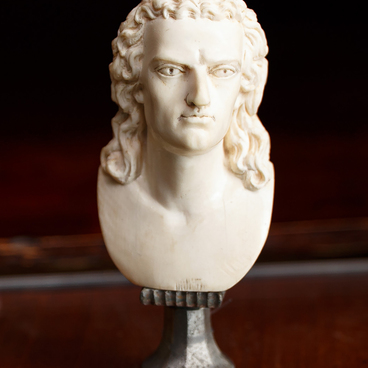The stamp box entered the Herzen Museum in 1992. It was a gift from the writer’s great-grandson Serge Herzen and his wife Marie, who lived in Switzerland. Alexander Herzen always corresponded extensively, therefore writing instruments were important to him. The State Museum of the History of Russian Literature also keeps blotters for papers and letters that belonged to Alexander Herzen and his wife Natalya Alexandrovna.
Postage stamps appeared in Russia only in 1857. They had been introduced earlier in Europe: in 1843 in Switzerland and in 1849 — in France. These milestones coincided with the trips abroad that Herzen took with his family, which soon turned into exile. Before the advent of stamps, envelopes, both for private and official correspondence, were glued and sealed with wafers — paper circles soaked in glue.
Wafers were mentioned by Alexander Sergeyevich
Pushkin in “Eugene Onegin”,




